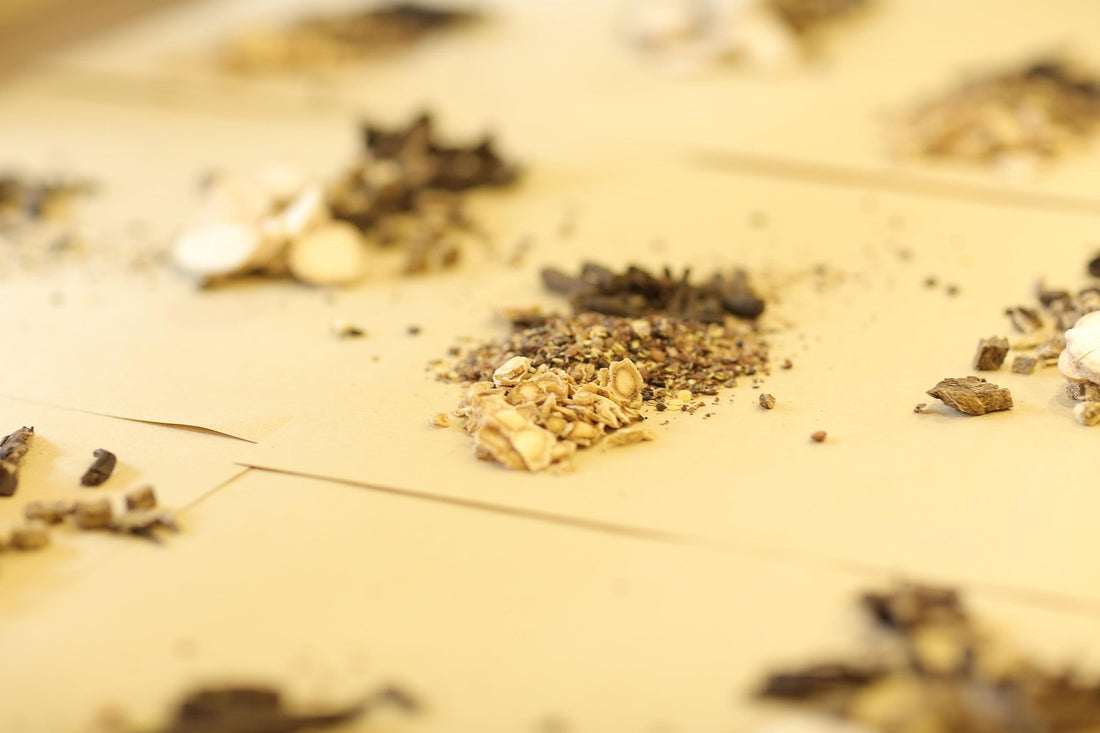
What Makes an Incense Medicinal? From Ritual to Remedy
If you've ever lit incense and felt something shift—not just in the room, but in your body—you’re not imagining it. For centuries, incense wasn’t merely about fragrance. In Tibetan monasteries, Chinese temples, Ayurvedic clinics, and Indigenous rituals, it was used intentionally: to clarify, to focus, to support the body’s balance.
Today, we’re seeing a quiet revival of that ancient practice—an interest in what we might call “medicinal incense.” But what makes an incense medicinal? And how is it different from the sticks we buy in bulk with synthetic lavender perfume?

The Core Difference: Function vs. Fragrance
Conventional incense is often built for one thing: scent. These are usually mass-produced, using perfumed oils, dip sticks, and chemical binders. They serve the nose, not the nervous system.
Medicinal incense, on the other hand, is rooted in traditional formulas. It is:
- Made from real resins, woods, and herbs—no synthetic oils
- Often blended using lineage-based knowledge from TCM, Tibetan medicine, or Ayurveda
- Rolled or shaped by hand without chemical combustion agents
- Burned not just to "smell nice" but to shift a space energetically, mentally, and physiologically

From Monastery to Modernity
In Tibetan traditions, incense is categorized with other delivery tools like powders, oils, and decoctions. Each has a specific use: some incense is meant to focus the mind before study or meditation. Others are used to purify illness energy. The formulas are exacting—often with over 30 ingredients—balanced by elemental qualities (wind, fire, water, etc.).
At Lhasa Remedy, we work directly with artisans who still follow these traditional prescriptions. Blends like Lucky Zaki and Chomolung Snow are examples: they aren’t designed in a lab or branded with trendy buzzwords. They are part of a slow lineage, translated into small-batch form.

So, Is It Medicine?
In the Western legal system: no. But in the systems where it originates—from the Tibetan plateau to South Asia to Indigenous ceremonies—incense has long been understood as a healing adjunct. It supports rather than replaces.
Rather than treating a disease, it may help:
- Regulate mood and mental focus through scent-mind-body connection
- Provide ritual structure to moments of stress or reflection
- Clear environments in ways that feel more intentional than chemical sprays

The Ritual Itself Is Therapeutic
Lighting incense slows you down. You stop. You focus. You breathe. Whether or not the herbs “do something” on a pharmacological level, the act of preparation and pause is what turns this into a therapeutic moment.
And this is where medicinal incense truly lives—not only in the pharmacology of pine resin or the aroma of juniper, but in the centuries-old agreement that breath is sacred, and scent is a bridge.

Final Thoughts
In a world dominated by speed and synthetic overload, returning to ritual is its own kind of medicine. Medicinal incense isn’t a cure—it’s a reminder. That the air we breathe can carry more than aroma. It can carry memory, presence, and even transformation.
Discover the ingredients behind Lucky Zaki and Chomolung Snow and reawaken the original purpose of incense: to heal through the unseen.

